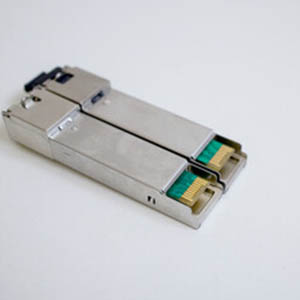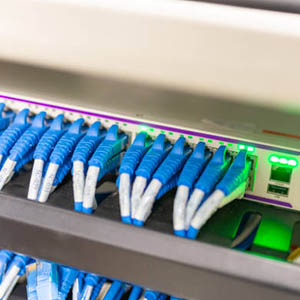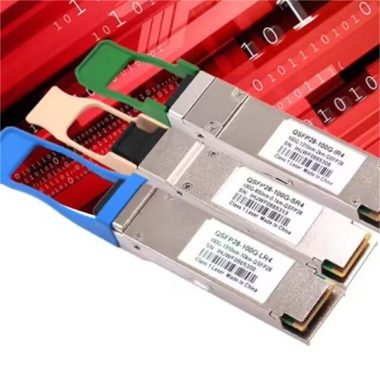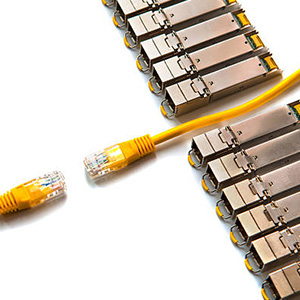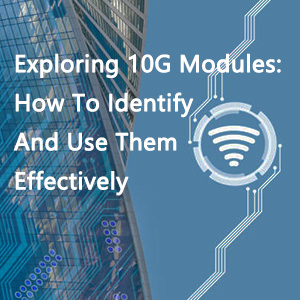With the widespread adoption of fiber optic networks and the rapid advancement of optical communication technology, the demands for the quality of optical modules have become increasingly stringent. Typically, optical modules undergo rigorous testing to ensure their quality and performance prior to shipment. This article explores the types of testing required for fiber optic transceivers.

Optical Transceiver Testing Before Assembly
Incoming Quality Control (IQC) and inspection of surface-mounted components are crucial for fiber optic transceivers before assembly. IQC is the process of controlling the quality of fiber optic materials and components before production begins. In the manufacturing of fiber optic transceivers, suppliers must test the optical emitting module (TOSA), optical receiving module (ROSA), and optical transmitting and receiving module (BOSA) to ensure the quality and performance of the transceivers. The inspection of surface-mounted components primarily checks for the correctness of the Printed Circuit Board (PCB) and the presence of any contamination, thereby ensuring the performance of the fiber optic transceivers.

Optical Transceiver Testing After Assembly
Once the assembly of the optical module is complete, a series of parameter tests are necessary to evaluate the signals at the transmitting (TX) and receiving (RX) ends. Compliance with MSA standards for parameters such as average output optical power, extinction ratio, optical modulation amplitude (OMA), and bit error rate (BER) tests is essential to verify the performance and quality of the modules.
Average Output Optical Power Measurement
The average output optical power is a critical parameter for transceivers, directly impacting the communication quality of the module. It represents the average optical power of transceivers under normal operating conditions. Optical power meters are used to measure the transmitting end’s optical power. For transceivers intended for long-distance transmission, the average optical power should exceed the maximum input optical power.
Extinction Ratio Measurement
The extinction ratio is the ratio of the optical power at the high and low levels of the laser output. This test assesses whether the laser operates at the optimal bias point and modulation efficiency. The relative amplitudes of the “1” and “0” levels of the optical signal are detected during the extinction ratio measurement. A larger extinction ratio and relative amplitude indicate a stronger optical signal and higher receiving sensitivity. Additionally, the extinction ratio is inversely proportional to the optical power; a larger ratio results in lower emitted optical power.

Optical Modulation Amplitude Test
The optical modulation amplitude (OMA) measures the difference between two optical power levels generated by the power source, P1 (when the light source is on) and P0 (when off). With OMA, it is possible to utilize a low or high extinction ratio, provided that eye safety is maintained at the transmitter and the receiver is not overloaded.
Bit Error Rate & Receiving Sensitivity Test
The bit error rate (BER) characterizes the performance of data channels by measuring the number of bit errors in a given number of transmissions, indicating the frequency of packet retransmissions due to errors. A higher BER suggests slower data rates and extended transmission times. To ensure transmission stability and reliability, fiber optic transceivers must undergo BER testing to maintain quality.

Receiving sensitivity is the minimum optical power required at the receiver to achieve the target BER. Typically, the RF power level received by an antenna on the ground ranges from -125 dBm to -150 dBm, depending on environmental factors. Generally, better receiving sensitivity corresponds to a smaller minimum received optical power (and vice versa). Poor receiving sensitivity increases the requirements for the optical module’s receiving device.
Eye Pattern Test
The eye pattern test is essential for ensuring the signal quality of transceivers. The eye pattern is formed by superimposing and accumulating all captured waveforms according to the oscilloscope’s persistence function. The digital signal quality of the optical module is reflected in the eye pattern test results. The performance of the optical module is judged by observing the eye height, width, jitter, and duty cycle of the eye diagram. A larger eye indicates less crosstalk between codes, implying superior performance of the optical transceiver.
The multi-source agreement (MSA) specifies the standard eye pattern for transceivers (the purple part in the figure below). The transceiver is MSA-compliant only if its eye pattern falls within the grey area. If a fiber optic transceiver fails the eye pattern test, additional calibration is required to improve performance.

Wavelength Testing
For connecting two devices, fiber optic transceivers must operate on the same wavelength. Manufacturers must test the wavelengths to ensure they are within the normal range. A spectrum analyzer is typically used to measure the transceiver’s center wavelength. Deviations in the center wavelength are normal and accepted within a certain range. For example, the SFP-10G-LR optical module has a central wavelength of 1310nm with a deviation of ±50nm, while the SFP-10G-SR module has a central wavelength of 850nm with a deviation of ±10nm. Optical modules with test results inconsistent with standard specifications are considered defective.
Other Important Inspections for Optical Transceivers
Aging Test
Manufacturers use optical aging boxes to simulate extreme working conditions and verify if the module’s performance meets standards. After the aging test, the transmitter and receiver must be tested for compliance with optical power, extinction ratio, and sensitivity parameters.
Compatibility Test
This test checks the compatibility of fiber optic modules. The transceiver is inserted into various brand switches to ensure it operates well. The compatibility test helps avoid pitfalls and verifies that third-party components meet system-level requirements.
End-Face Inspection
After passing all tests, the module is inspected under a microscope for dirt and scratches. Frequent plugging and unplugging can contaminate the transceiver. End-face inspection before shipment ensures the module’s cleanliness.
Conclusion
A qualified fiber optic transceiver must undergo thorough testing to ensure high availability and reliability. Manufacturers must have standardized production lines and comprehensive quality test systems for optical modules.

